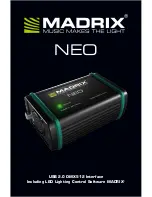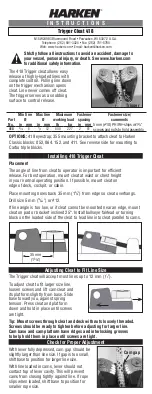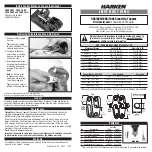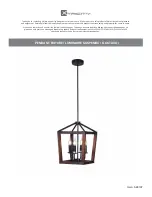
WavePro 7Zi
463
WP700Zi-OM-E-RevA
x
Channel
Emulation
with
a reference saves up to 20,000 bits as its reference, while also saving ML sample
results; there can be up to 250 separate Read Gate true sections in the data analyzed by Channel
Emulation with reference.
x
Analog Compare can handle one block of data of any length up to the maximum that can be acquired and
stored by the DDA. It is the most computationally intensive error find method, so its use on maximum
length waveforms will not be typical. Another indirect constraint on waveform size arises if Read Gate is
used. If the source of Read Gate is set to something other than NONE, Read Gate will break the data into
multiple blocks. In that case, there is a requirement that the start of each block, relative to the first block in
the reference and the acquisition, be the same within the DDA’s realignment window of about 12 bit cells.
Selecting the Reference Waveform
The Analog Compare and Channel Emulation with reference signal channel analysis methods compare the
captured head signal to a stored reference head signal. For these methods, the appropriate menus will only
appear after a head signal has been selected.
The stored reference should be acquired in the same manner (same time/div, sample rate, trigger position, etc.)
and with the same timing as the acquisitions to which it is to be compared. It is not possible to compare a
reference having only one sector to every sector in an acquisition containing many; and a split sector cannot be
compared with an unsplit or differently split sector.
Generally, it is best that the reference signal be from the same drive section as the one with which it is to be
compared. This will ensure that any splits that occur are in the same location. Another reason for selecting the
same drive section is to avoid scrambler problems. If a drive uses a scrambler, two sections with the same logic
data may have different head signals. Since Channel Emulation with reference and Analog Compare both analyze
the head signal, they may see differences between the reference and acquired signals due to the presence of the
scrambler and not because real problems exist. If a scrambler is not present, it is reasonable to use other drive
sections from the same zone as a reference.
The head signal can be stored as a reference simply in order to have a stored trace automatically overlapped with
later acquisitions. This can be done even if the selected channel analysis method does not require a reference, or
if you do not intend to use the method. This might be done just to scroll through waveforms using Auto Scroll to
see how well they match.
Changing the source of the Head Signal or Read Gate invalidates the stored reference. You must store another
valid reference for the new setup.
Time/Div Settings
The DDA allows you to keep acquiring a head signal until it finds a problem, at which point it will stop the
acquisition so that errors can be analyzed. In order for Drive Channel Analysis to operate properly the DDA trigger
must be set up so that the correct waveform section or sections are reliably acquired. The trigger setting must be
selected to obtain the desired data on the display, in approximately the same position, in each acquisition.
In addition, the time/div must be set properly. Two factors should be taken into account when setting this. First,
the time/div should be set to a sufficient duration so that the head signal sections that will be analyzed are
captured. Second, in order for the DDA to correctly analyze a head signal it should have at least five ADC
samples per bit cell.
For drives without ID, Read Gate only goes true to read the data of interest. If you can manually initiate a read
operation of the desired data, this is easy: trigger on the leading edge of Read Gate, and every time the data is
read, the DDA will trigger. Wait for the channel analysis to be done (the instrument rearms if no problems are
found) before performing another read.
A precaution should be taken if more than a single Read Gate block of data is to be analyzed. For this situation, if
reads are being performed repeatedly it is important to ensure that the trigger mode selected is not one that
triggers solely on the occurrence of any Read Gate. Otherwise, the Read Gate block triggered on might
sometimes be the second or later Read Gate true section.
If the drive provides Sector Pulses at the beginning of each sector it is recommended that the DDA’s Sector Pulse
trigger be used to avoid this problem.
Otherwise, a SMART Trigger can easily solve this problem, by triggering on the first (or nth) Read Gate edge after
Index.
If Read Gate is not available or its use is not desired, but looking at the head signal is, try triggering on Index and
using a trigger delay to move out to the region of interest. Use the Analyze Region markers to delimit the area to
Содержание DDA 7 Zi series
Страница 1: ...Operator s Manual WavePro SDA and DDA 7 Zi Series Oscilloscopes ...
Страница 2: ... L R R H HUD RU D D ...
Страница 41: ...Operator s Manual WP700Zi OM E RevA 40 The detachable WavePro Zi front panel ...
Страница 376: ...WavePro 7Zi 375 WP700Zi OM E RevA Absolute Offset Relative ...
Страница 439: ...Operator s Manual WP700Zi OM E RevA 438 ...
Страница 440: ...WavePro 7Zi 439 WP700Zi OM E RevA ...
Страница 544: ...Thank you for purchasing a WavePro SDA or DDA 7 Zi Oscilloscope ...
















































